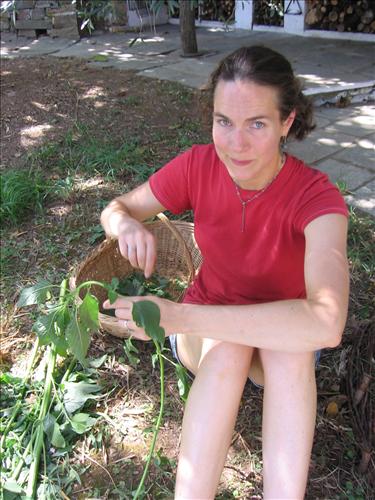Lemon Rosemary Marmalade
 After such an auspicious beginning tasting rosemary lemonade for the first time, I decided to try rosemary and lemon in another combination: marmalade. After all, my stores of blackberry and fig jam are getting thin, I'll need new stuff to spread on my morning toast. I think it is important to use organic lemons here since you use all the zest, so it's best if it hasn't been sprayed.
After such an auspicious beginning tasting rosemary lemonade for the first time, I decided to try rosemary and lemon in another combination: marmalade. After all, my stores of blackberry and fig jam are getting thin, I'll need new stuff to spread on my morning toast. I think it is important to use organic lemons here since you use all the zest, so it's best if it hasn't been sprayed.Here's the recipe:
organic lemons, quartered longways and very thinly sliced, seeds removed

water to cover
confectioner's sugar
1 tsp of chopped rosemary per cup of fruit pulp
commercial fruit pectin for jams/jellies/marmalades
I haven't given much information in the way of quantities since this recipe works in ratios. Place the lemon slices in a non-resctive saucepan. I happened only to use 2 lemons. Just barely cover with water. Cook over low heat for 1 hour. Cover and let stand for at least 4 hours or overnight. Measure the amount of fruit pulp and liquid you have. I had 2 cups. Place pulp mixture back into the pan. Add as many cups of sugar as you have pulp into the pan. To that, add 1 tsp of chopped rosemary leaves per cup of pulp and fruit pectin as per package directions. I added 1/4 of a package given the small amount I made.
In a different saucepan, place the canning jars and their lids, cover with water and bring to a boil. Once the canning jar water begins to steam (before it boils) put your lemon, sugar, rosemary mixture on high heat and stir frequently. Once the marmalade has been boiling for about 5 minutes, you can begin to test it's doneness. Place a drop of marmalade on a cool saucer. Wait a minute or two to allow it to set. Draw your finger through the drop and if the two sides remain separate (do not run together), it's done. Take a jar out of the now boiling water and fill to the rim with the marmalade. Repeat with as many jars as needed. If the jarring has been done right, the marmalade will keep for more than a year. There are other methods that have you filling and sealing the jars before you boil them. I've never tried that, but it may be an effective method as well.
When the mood strikes you, open up a jar and spread on toast or even maybe some roast lamb. Music to eat lemon rosemary marmalade by: "King for a Day" on the release, Oranges and Lemons by XTC.








